A house in Northern Ireland and a home by Irish architect Niall McLaughlin are on the 20-strong longlist for the Royal Institute of British Architects (RIBA) House of the Year 2019, whose winner will be announced in the autumn. There is not a modernist white box among them: instead, the main themes are homes in the shape of a traditional farm building or pitched-roof houses but made in traditional and non-traditional materials such as concrete, black wooden slats, cork and stone.
Vast country houses contrast with precious gems tucked neatly into London gardens, a couple of them on the footprint of former garages. Sustainability is naturally a hot topic, with buildings that use low or no energy, with some even giving it back to the grid. These include two by Bere:architects (Max Fordham house in Camden, London and Lark Rise in Aylesbury). Also on the list is the only permanent building in the UK by Pritzker Prize and RIBA Gold Medal winner Peter Zumthor.
A selection from the RIBA longlist:
1. The Ghost House in Stratford-upon-Avon by BPN Architects with Baynes & Co
Inspired by Japanese architect Tadao Ando, this 435sq m (4,682sq ft) house has a solidity in the way it hunkers into a former sunken garden and in its use of (in situ) concrete and black steel elements. However the concrete mix did contain a warm sand – and it was cast with all the holes for sockets and light-fittings. The column-free main living space, which runs the width of the house, has glazed walls opening onto a courtyard with reflecting pools, adding the ethereal spirit that gives the house, you suspect, its ghostly moniker.
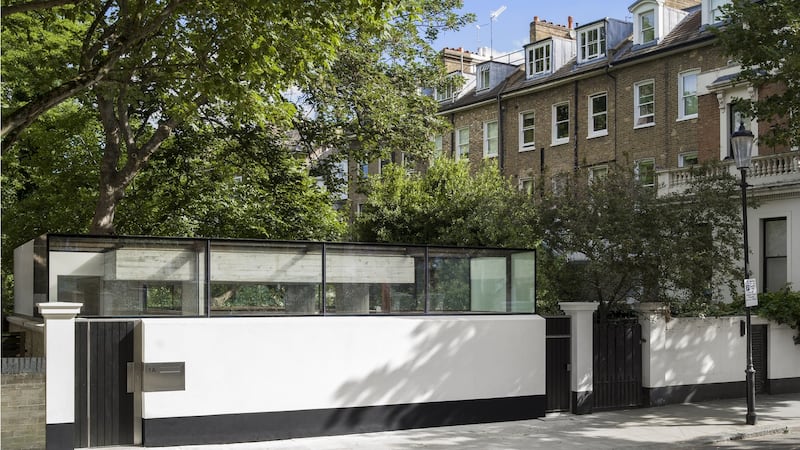
2. Earl's Court Square by Sophie Hicks Architects
Behind a garden wall and nestled between Georgian terraces in Kensington, this 150sq m (1,614.5sq ft) house was built on the site of two garages. Planning permission only allowed for one storey to be seen, so the lower level is below ground. A clerestory window peeping above the wall to the street indicates its presence. The living space is at this upper level while the two bedrooms and a bathroom are underground. The concrete walls, ceilings, floors and columns give the building a sense of calm, as does the glazing system held by structural steel elements and fine detailing where materials meet. Board-marked concrete and steel on the façade that rusted on site have been left to tell their life story.
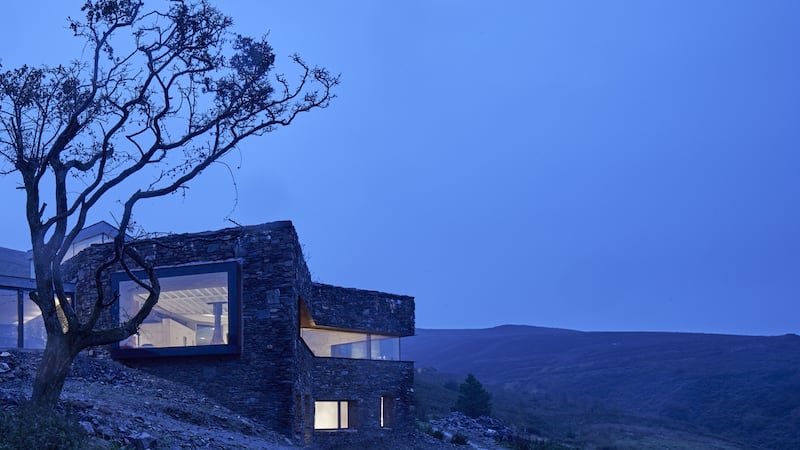
3. A Restorative Rural Retreat for Sartfell in the Isle of Man by Foster Lomas
Set into a west-facing slope, this 300sq m (3,229sq ft) house has views of the Irish Sea. Braced against the weather with thick walls, the house also embraces the elements with a large south-facing window in the living space. A cast-concrete interior is enclosed by thick insulated walls that have a vernacular dry-stone exterior. Warmth is sourced from a lake via a heat pump while an insulating turf roof merges the house into the countryside when viewed from the road above. Various energy-saving elements and on-site water supply and treatment will eventually free the building from utility companies.
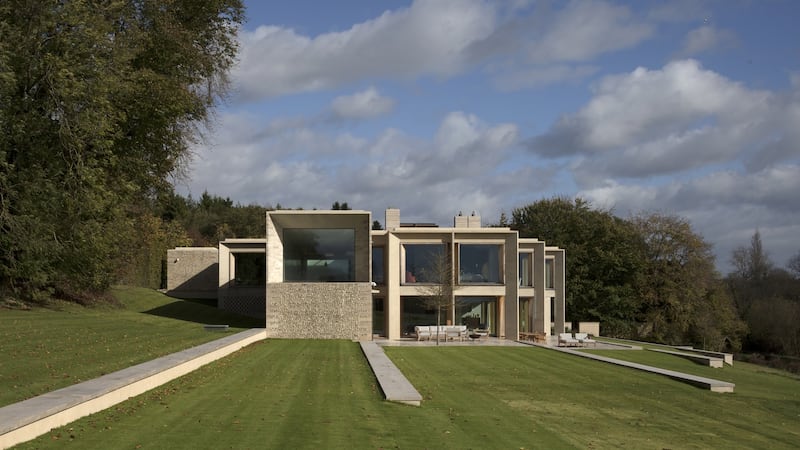
4. Hampshire House by Niall McLaughlin Architects
This house by a river reflects the local landscape in its use of materials and embraces family, and the stages of life, in its form. The home is made up of staggered pavilions centring on the "parent's pavilion" containing a double-height courtyard kitchen where the generations gather. Above this is a corridor connecting it to a "children's pavilion" and "grandparents' pavilion". For all its grandness, the house has a human scale within. Flint, Purbeck stone and untreated oak window frames (which will eventually weather to the colour of the flint and stone) link the exterior to its surroundings. The environmental and mechanical and electrical engineering was by the firm of Max Fordham, whose own house is on this year's RIBA longlist.
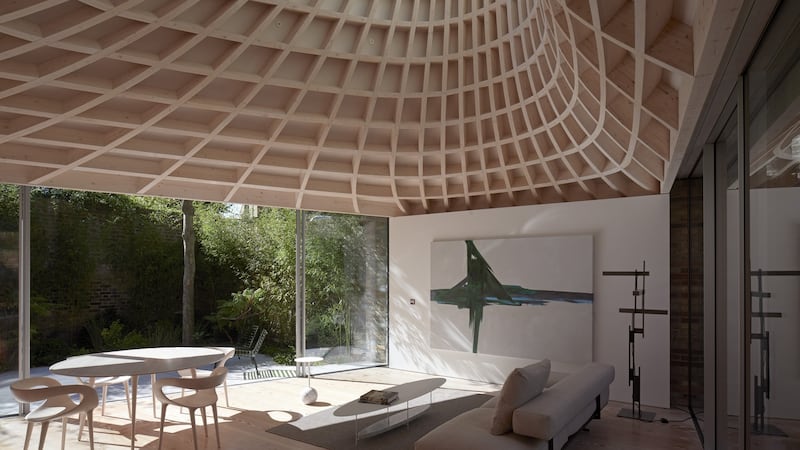
5. House in a Garden by Gianni Botsford Architects
Overshadowed by houses on three sides and a large plane tree, this house was designed to maximise natural light and privacy. It gives the neighbours something back, with a sculptural copper roof to contemplate. Inside the 253sq m (2,723sq ft) house, this ceiling is experienced as floating above the glazed walls. An oculus (round window) at its apex enables the sun to travel across the living space. As with other homes on the RIBA longlist, this house has a below-ground level with bedrooms, a sitting area and swimming pool illuminated by light-wells. Internal materials include grey Carrara marble, Douglas fir and copper kitchen cabinets and splashbacks.
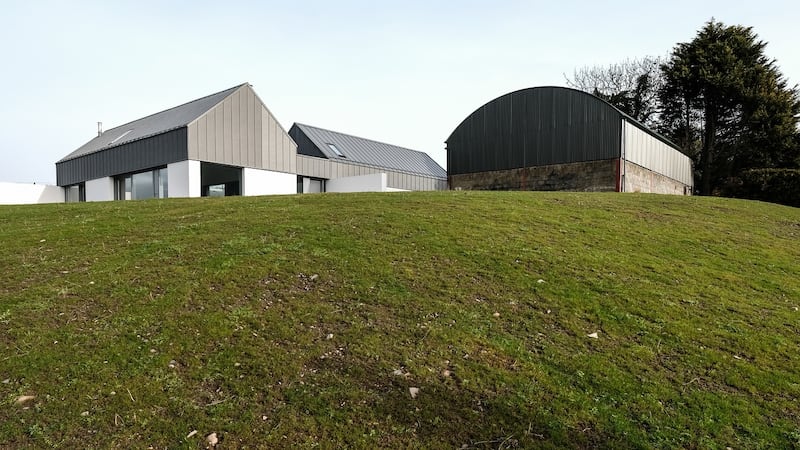
6. House Lessans in Saintfield, Northern Ireland by McGonigle McGrath
A new take on a traditional farmstead, this 235sq m (2,529.5sq ft) home comprises two parts that relate to an existing barn and which create a forecourt and courtyard as part of the composition. The pitched zinc roofs on masonry walls, rising from an embedded concrete plinth, speak to the vernacular but generous volumes within break from small rooms of old: all of this brings a mix of calm and generosity. The buildings and windows have been carefully placed to make the most of verdant views. The house was created on a tight budget.
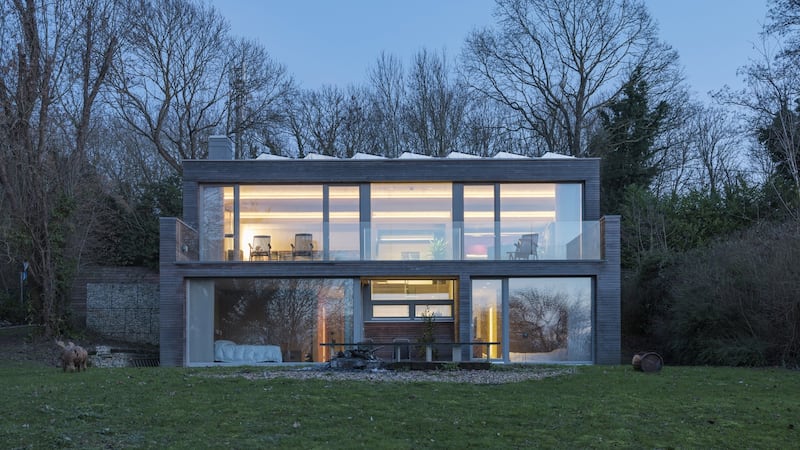
7. Lark Rise in Aylesbury by Bere:architects
This 175sq m (1,883.6sq ft) "healthy home" produces twice the amount of energy in a year than it consumes. The UK's first passive house plus uses the sun, wind and rain to service itself and process its own waste. Crucially, it shows how such sustainability can be achieved in a well-crafted building with great detailing and the jury hopes it will transform architectural approaches to sustainable design and self-sufficiency. Bere:architects also have another home on the RIBA longlist: the Max Fordham House in a London mews. This 163sq m house "for a lifelong environmental innovator" harvests natural resources to provide warmth and shelter. The house is behind timber slats and is set back at the upper level where it opens to a west-facing terrace. As well as being environmentally sustainable it is also designed as a lifetime home with a fully accessible ground floor.

8. Secular Retreat in Devon by Atelier Peter Zumthor with Mole Architects
Commissioned by Alain de Botton's Living Architecture holiday homes organisation, this is Swiss architect Peter Zumthor's only permanent UK building. The 375sq m (4,036sq ft) five-bedroom, single-storey house, on a hill surrounded by Monterey Pines, is a handcrafted structure that took 10 years to build. It employed an innovative use of rammed concrete, with tests of the mix and aggregates carried out each day: no reinforcements were used in the walls. The main living space has a poured-concrete soffit and stone floor with varying shaped slabs from a Somerset quarry. A selection of timbers within are designed to "bring the landscape in".
RIBA House of the Year 2019 – the 20 longlisted homes
Black House (Armadale, Isle of Skye) by Dualchas
Cork House (Berkshire) by Matthew Barnett Howland with Dido Milne & Oliver Wilton
Earl's Court house (London) by Sophie Hicks Architects
The Ghost House (Stratford-upon-Avon) by BPN
The Green House (Tiverton) by David Sheppard Architects
Hampshire House by Niall McLaughlin Architects
Hannington Farm (Northamptonshire) by James Gorst Architects
Hill House Passivhaus (East Sussex) by Meloy Architects
House in a Garden (London) by Gianni Botsford Architects
House Lessans (Saintfield, Northern Ireland) by McGonigle McGrath
Kenwood Lee House (London) by Cousins & Cousins
Lark Rise (Buckinghamshire) by Bere:architects
Max Fordham house (London) by Bere:architects
Nithurst Farm (West Sussex) by Adam Richards Architects
Pocket House (London) by Tikari Works
A Restorative Retreat (Sartfell, Isle of Man) by Foster Lomas
Secular Retreat (Devon) by Peter Zumthor and Mole
Silver How (Llanhennock, Wales) by Hall + Bednarczyk
South London House (London) by Jonathan Pile
Stackyard (Derbyshire) by James Boon Architects
The shortlist and winner of the 2019 RIBA House of the Year will be revealed in the autumn on Channel 4’s Grand Designs: House of the Year



















